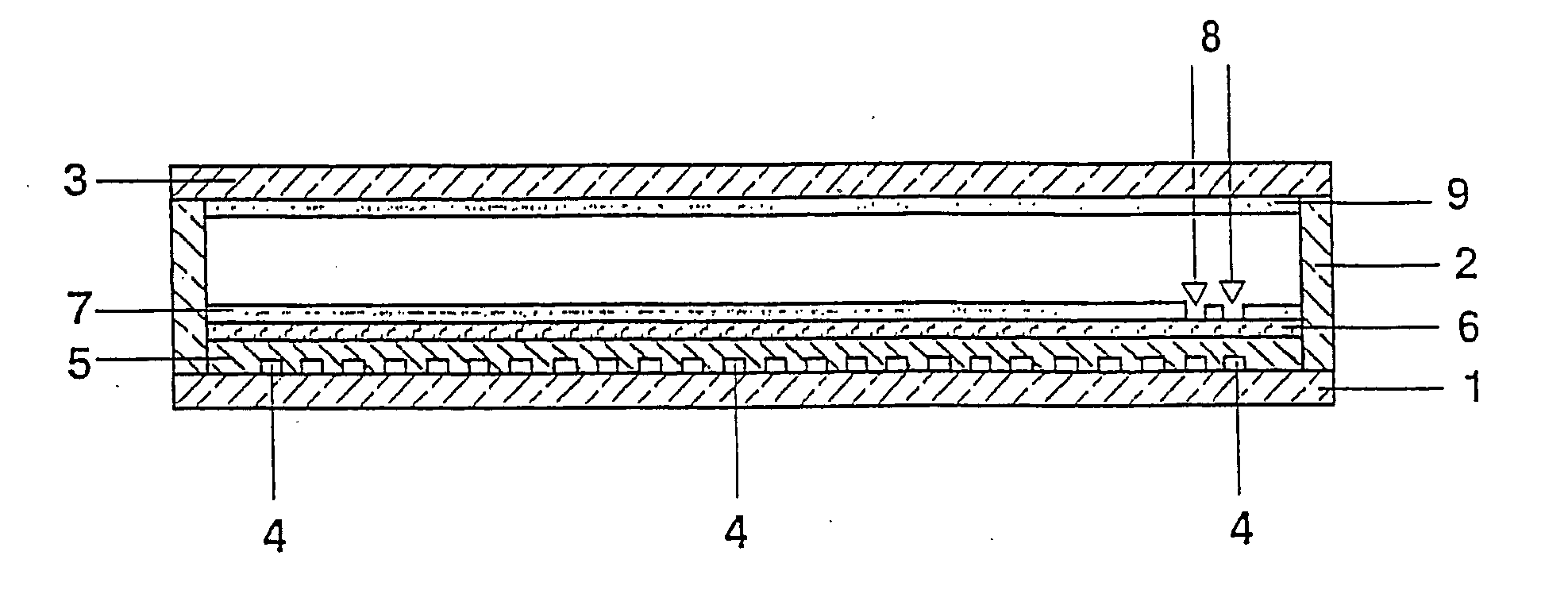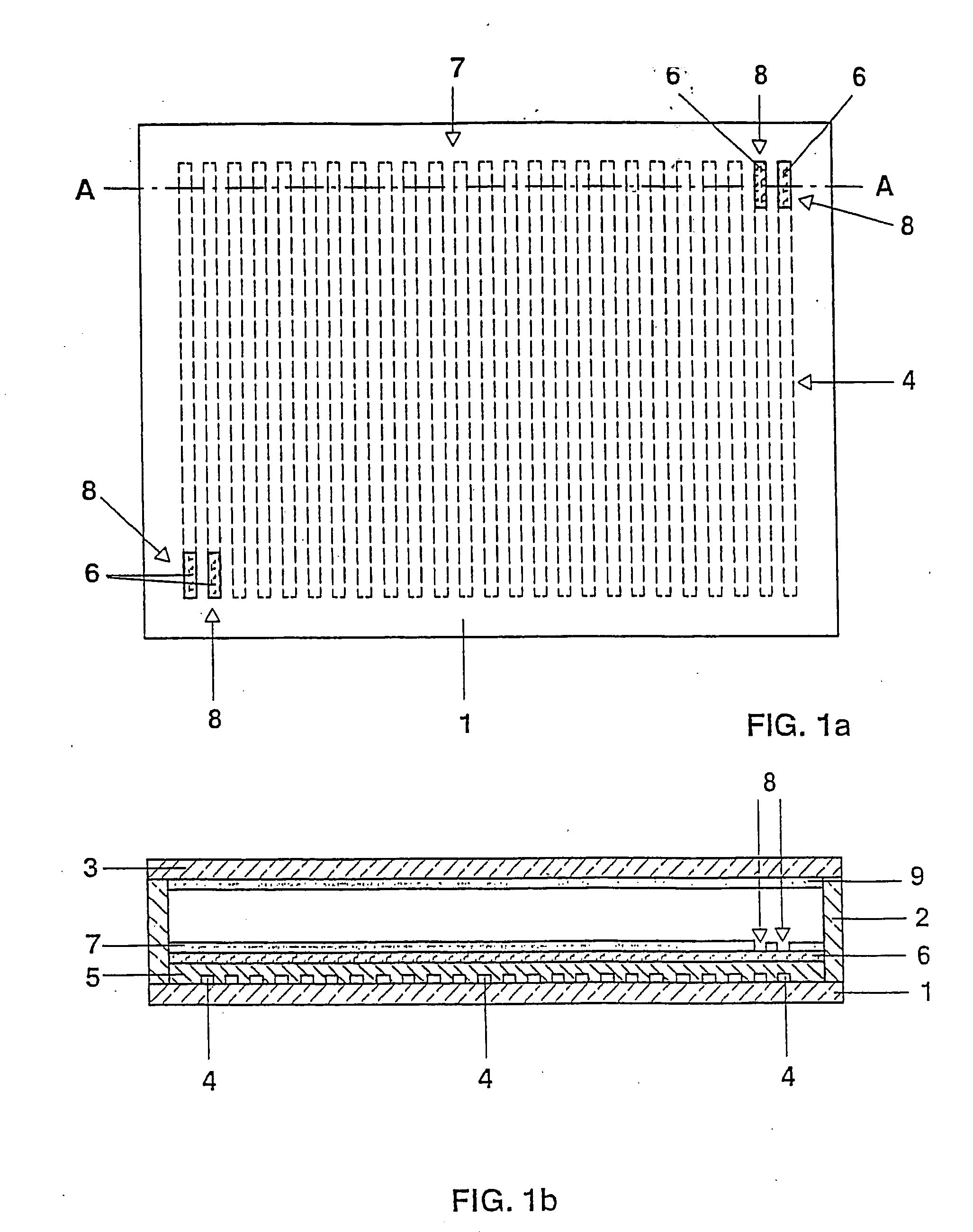With ignition assisted discharge lamp
a discharge lamp and assisted discharge technology, which is applied in the direction of electric discharge lamps, discharge tubes luminescnet screens, electrical equipment, etc., can solve the problems of long ignition delay after the application of voltage to the electrodes of the lamps, and the lamp can only be ignited with a significantly increased voltage compared with normal operation
- Summary
- Abstract
- Description
- Claims
- Application Information
AI Technical Summary
Benefits of technology
Problems solved by technology
Method used
Image
Examples
Embodiment Construction
[0026] FIGS. 1a and 1b show a diagrammatic plan view of a baseplate 1 of a flat lamp and, respectively, a cross section through a complete flat lamp based on the baseplate 1 in FIG. 1a along the line AA.
[0027] The baseplate 1 is connected to a front plate 3 by means of a peripheral frame 2 to form a gastight flat discharge vessel. A gas filling of xenon with a filling pressure of 10 kPa is situated within the flat lamp. Numerous strip-like electrode tracks 4 made of conductive silver solder having a width of approximately 1 mm and a thickness of approximately 10 .mu.m are printed on the inner wall of the baseplate 1. Their distance from one another is approximately 6 mm. For operation, the strip-like electrodes 4 are alternately connected to one of the two poles of a voltage source which supplies a pulse voltage sequence. As a result, numerous partial discharges form between the directly adjacent electrode tracks. In this case, the partial discharges start essentially beside one ano...
PUM
 Login to View More
Login to View More Abstract
Description
Claims
Application Information
 Login to View More
Login to View More - R&D
- Intellectual Property
- Life Sciences
- Materials
- Tech Scout
- Unparalleled Data Quality
- Higher Quality Content
- 60% Fewer Hallucinations
Browse by: Latest US Patents, China's latest patents, Technical Efficacy Thesaurus, Application Domain, Technology Topic, Popular Technical Reports.
© 2025 PatSnap. All rights reserved.Legal|Privacy policy|Modern Slavery Act Transparency Statement|Sitemap|About US| Contact US: help@patsnap.com


